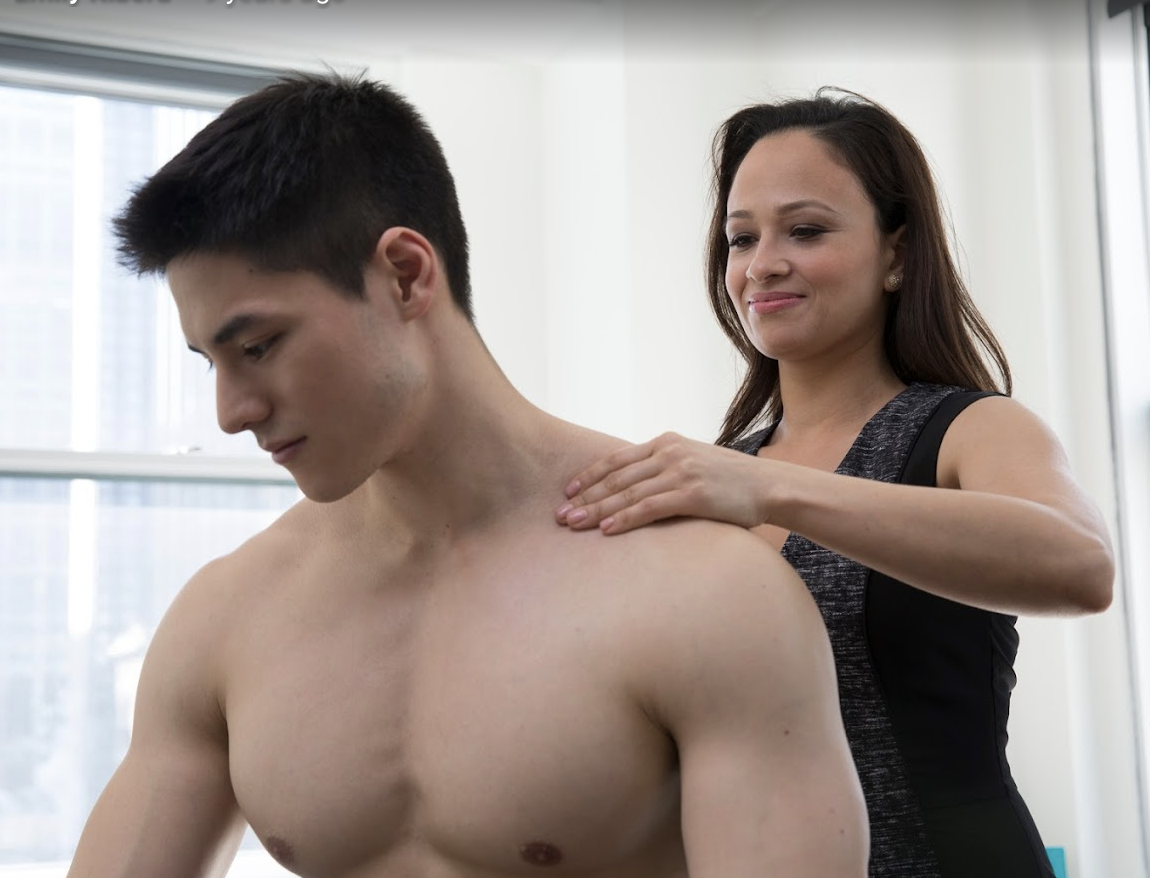
Connect With Bethany
(Human Mechanic )
I will take a full body approach to your care. Together we will take a dive deep into your everyday life: By assessing exercise routine, ergonomics, and posture. I treat the whole client not just injuries.
Anatomy In Motion (AIM)
Anatomy in Motion is a new way of looking at the relationship between how your body moves from the foot up. This system was developed by UK expert in human movement and anatomy, Gary Ward. His philosophy is simple:
The human body is the ultimate healer.
Using the Anatomy in Motion philosophy, we assess your feet, looking at factors such as: how your feet are positioned, how your toes move or don’t move, how you shift your weight, and how you strike while walking and running. These factors allow me to see how your feet are affecting the rest of your body. Learn More
Dynamic Neuromuscular Stabilization (DNS)
DNS is a neuromuscular re-education, it’s based upon the groundbreaking neurodevelopmental and rehabilitation principles organized by Pavel Kolar. This new rehabilitation approach is called Dynamic Neuromuscular Stabilization (DNS). The nervous system establishes plans that control human posture, movement and gait. This ‘motor control’ is largely established during the first critical years of life. Therefore, this technique emphasizes neurodevelopmental aspects of motor control in order to restore healthy function in the body. Learn More
Selective Functional Movement Assessment (SFMA)
Selective Functional Movement Assessment was developed for practitioners by Gray Cook and his colleagues, the same group who developed the Functional Movement System. The assessment is a series of 7 full-body movement tests that are used to assist with the diagnosis and treatment of musculoskeletal pain.
I use SFMA to evaluate seven fundamental movement patterns that are crucial to moving pain-free on each individual client. The assessment provides a clear, systematic picture of what is happening in your body, allowing us to trace the root cause of any pain.
Selective Functional Movement Assessment enables me to prescribe the right treatment combination. Movement building, Active Release Technique, and other assessment corrective exercises are all forms of treatment we use to get you back to doing what you love, pain-free. Learn More
Active Release Technique® (ART)
Active Release Technique is a hands-on therapy used to treat muscles, nerves, joint capsules, scar tissue, and connective tissue that have been injured by acute, chronic, or pressure injuries. This treatment was developed by Dr. Michael Leahy. His technique is based on a system of specific movements and massage methods designed to eliminate pain and increase mobility.
This is not a ‘normal’ manual technique; as the goal of this treatment is to restore normal mobility and motion between muscle tissue and nerves. Active Release treatment has become known as a ‘Gold Standard’ treatment for world-class athletes around the world. Learn More
Neurokinetic Therapy (NKT)
Neurokinetic Therapy focuses on hands-on muscle testing, which helps me to quickly assess why a muscle may feel tight or may be overcompensating for weakness in other parts of the body. Neurokinetic Therapy (NKT) is a type of neurological physical therapy. It is designed to help your brain reconnect with your neurological-muscular signals. It is based on a chiropractic technique called Applied Kinesiology and was co-developed by David Weinstock in the mid 80s. By using NKT I dig deep to get the total scoop on all of your injuries and can often identify any missing links in your treatment.
Using muscle testing I evaluate the effect that weak movement patterns have on your entire body. Next, expect a custom set of exercises to retrain your motor control and recharge your body.
Cupping
Cupping therapy is a technique that has been around for hundreds of years from ancient Chinese Medicine. A cup is heated (I use plastic cups) and placed on the skin creating a negative vacuum suction, which pulls blood to the surface of the skin. A tight or injured spot will let itself be known by an immediate bright purple reaction also known as petechiae. In Chinese Medicine, pain ensues when there is a stagnation of heat in the body, and cupping clears this by moving ‘qi’ around the body. Cupping therapy, along with oxygen, increases the blood flow to the injured area and launches an inflammatory immune response. The immune system releases proteins called cytokines to address and reduce inflammation. Cupping is used to enhance performance by providing: reduced stiffness, reduced muscle cramps, loosened congestion, diminished scar tissue as well as faster scar healing. Note that bruising can last up to 2 weeks, depending on how you heal. Learn More
Get in touch with Bethany!
See how our specialized approach to pain relief and movement therapy has transformed the lives of those we’ve worked with. Read what our clients have experienced on their journey to better health.




